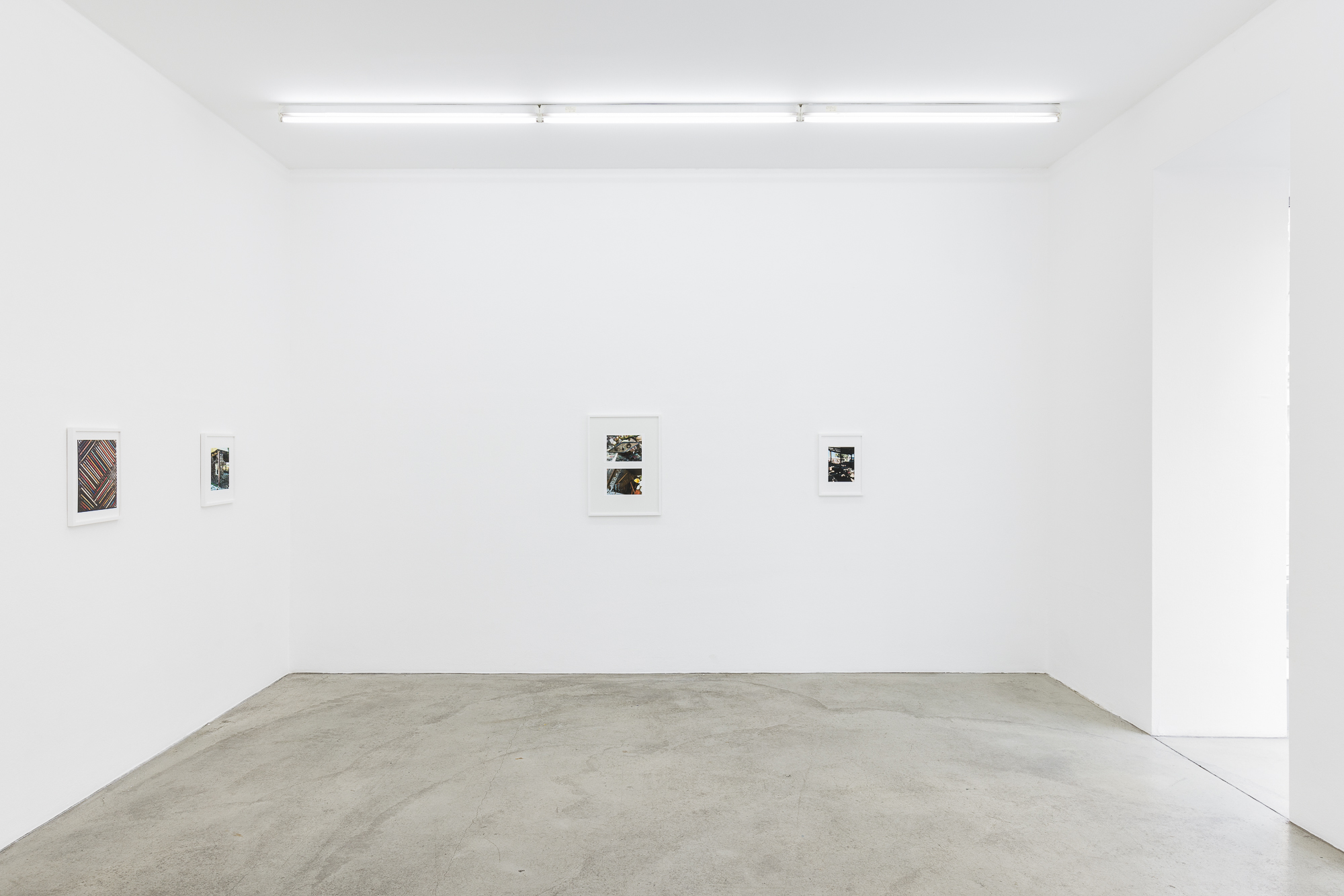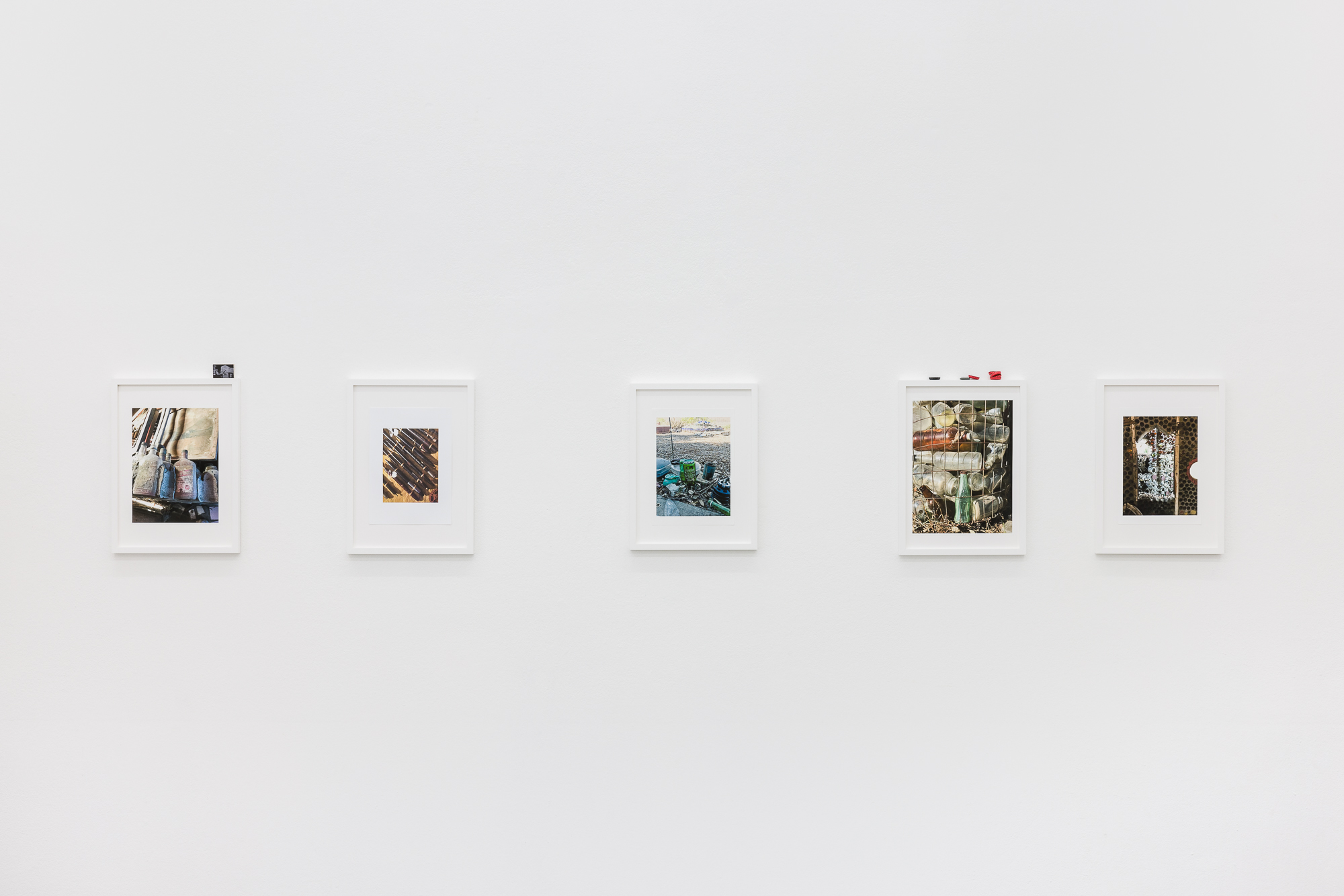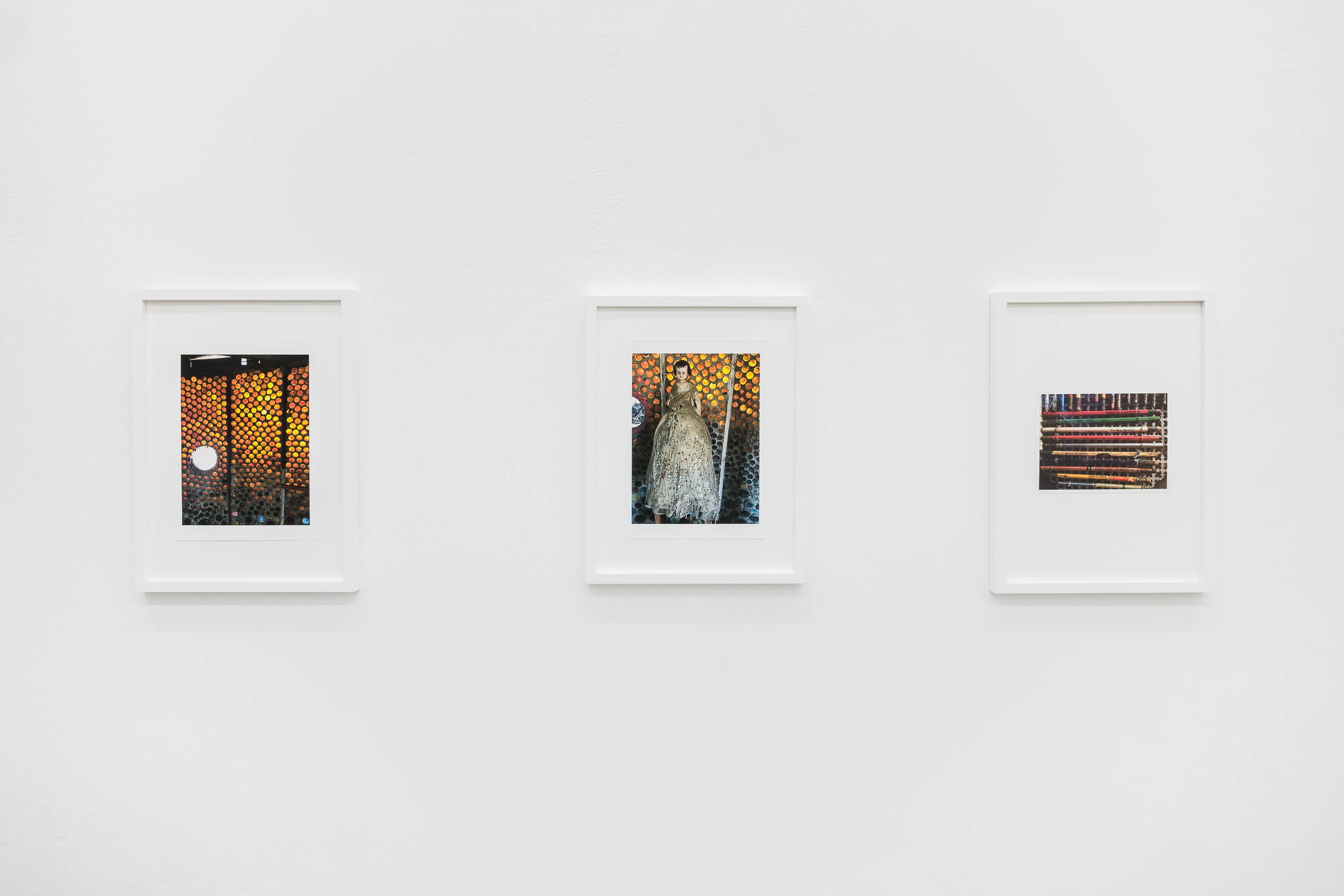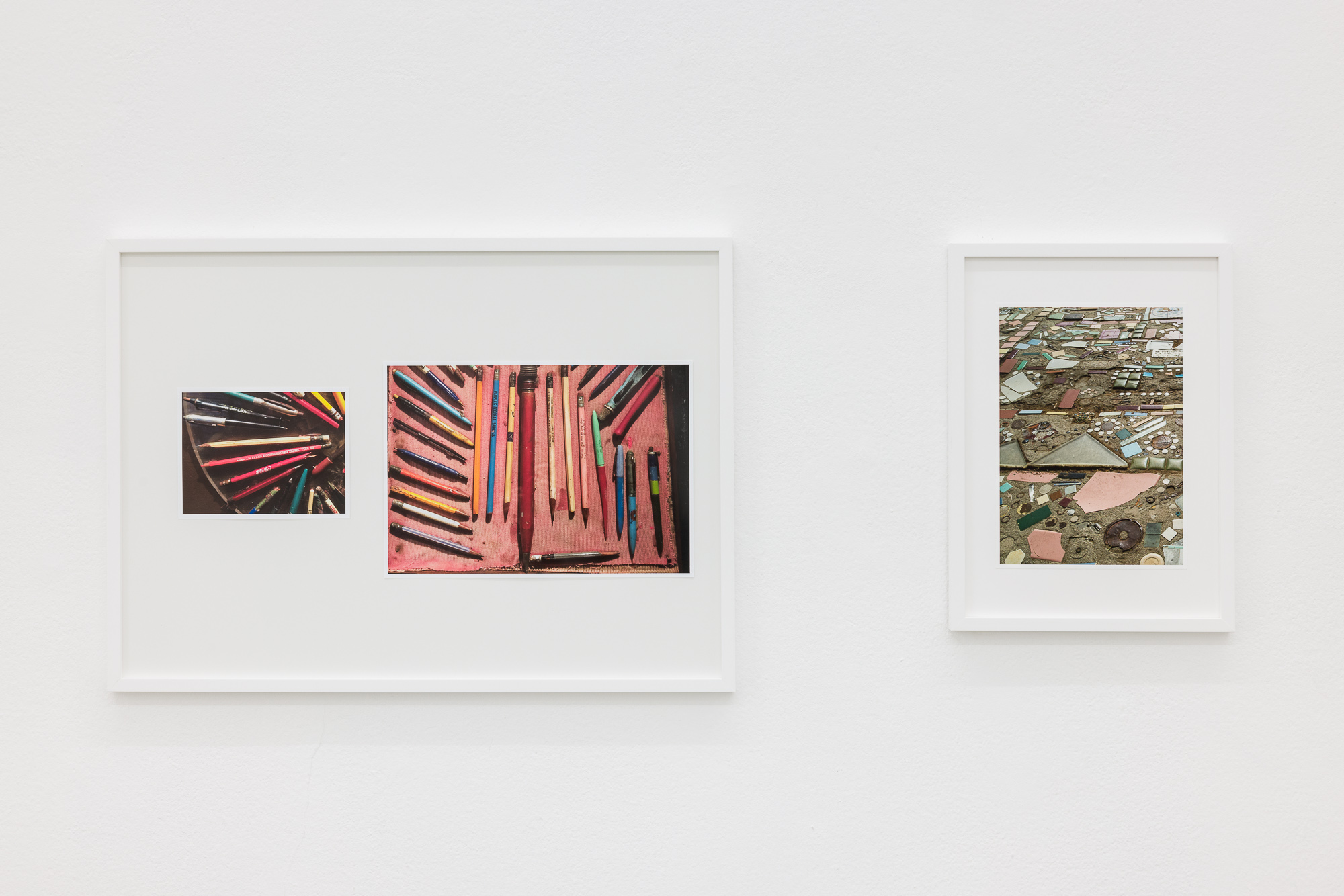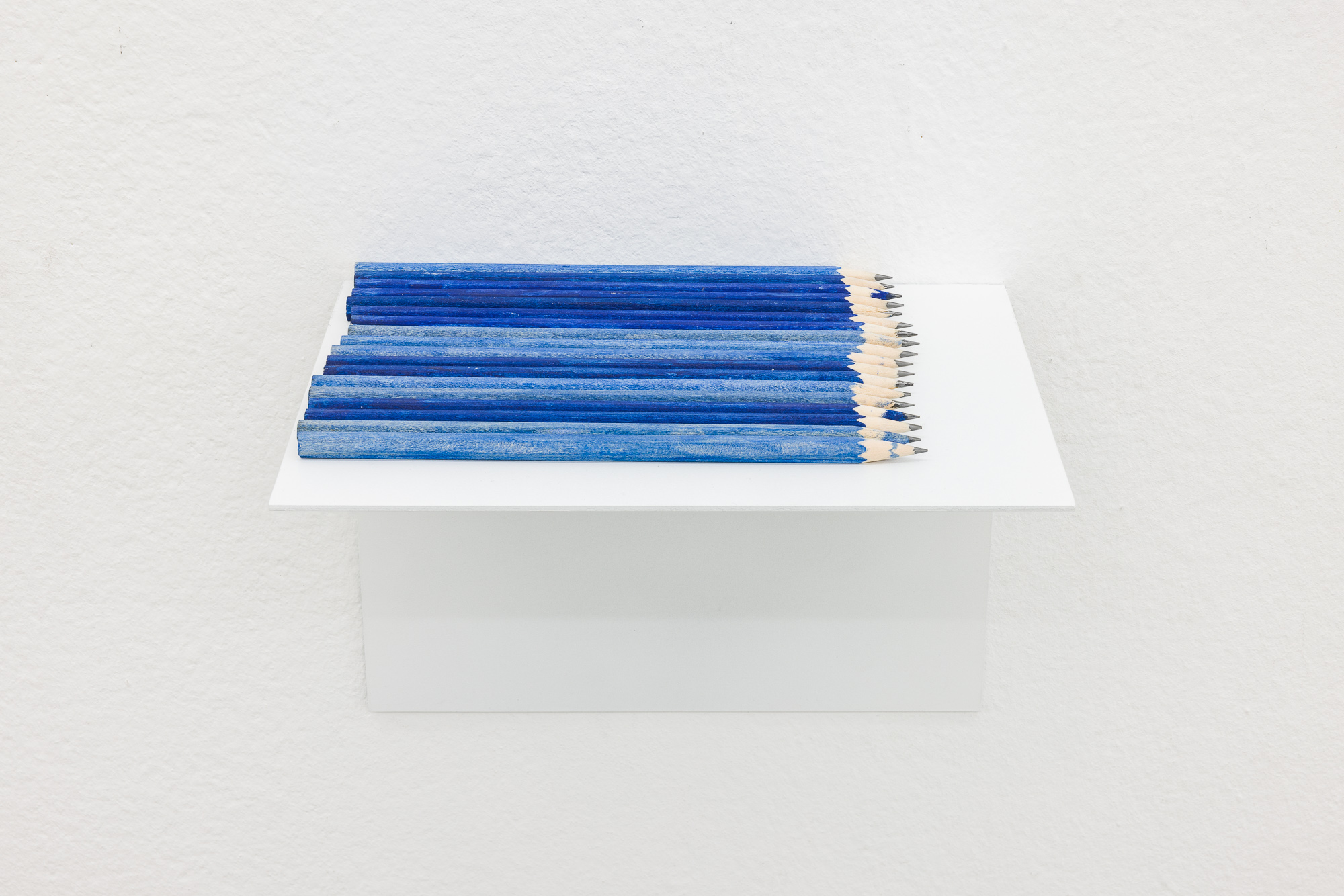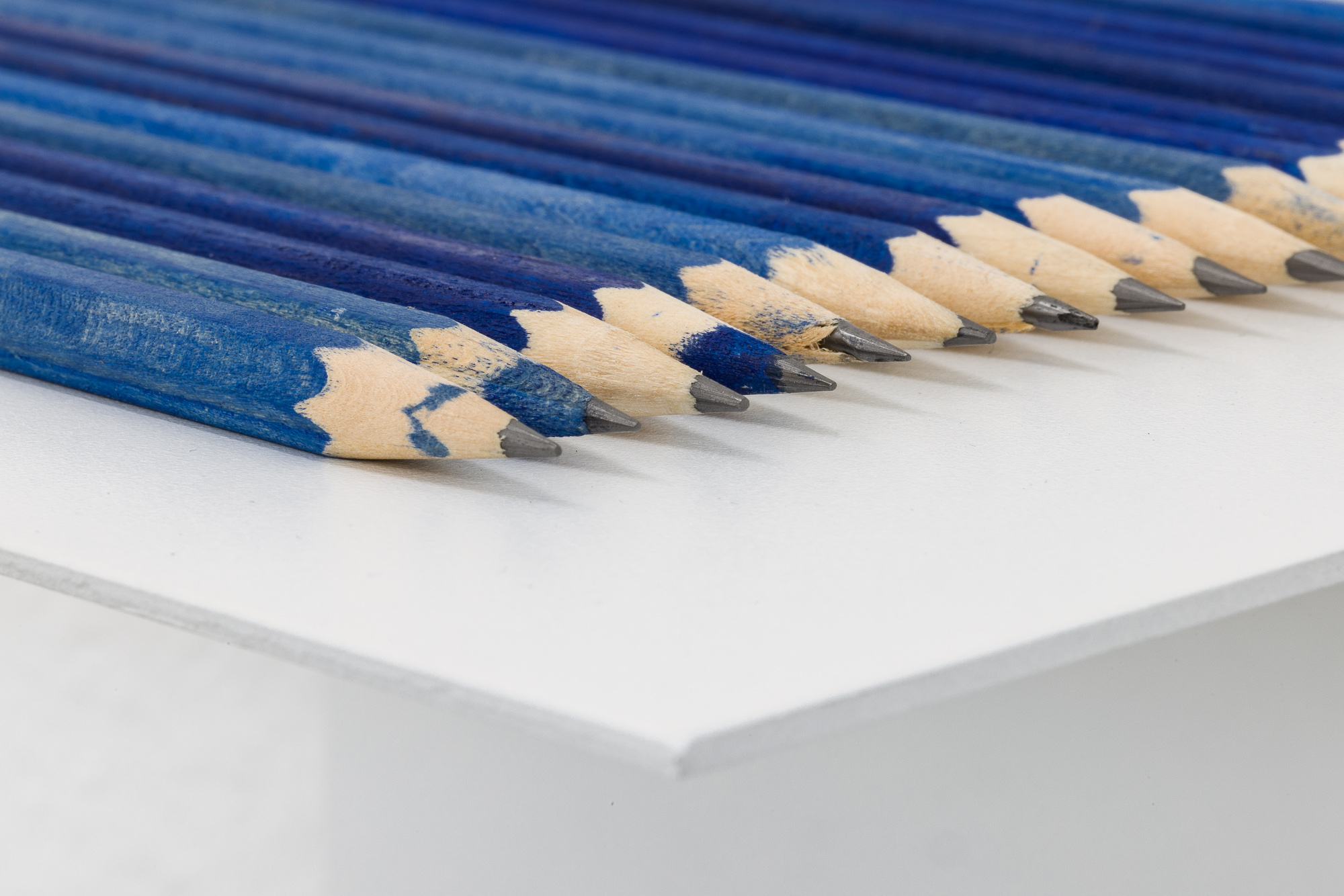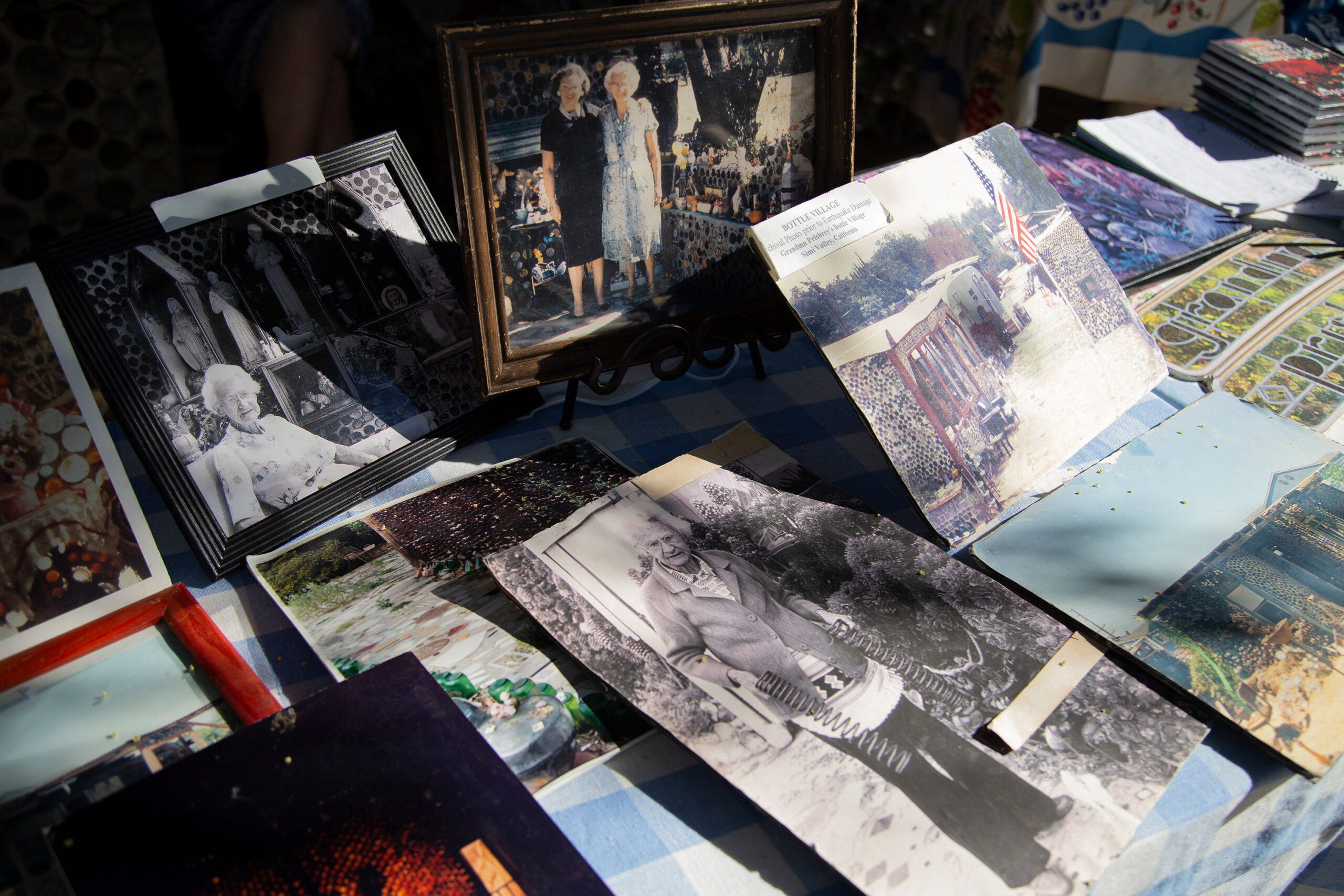
Kathi Hofer
Invitation, 2022
photographed by Brice Bischoff, 2021
Als ich im letzten Jahr ein Buch über die US-amerikanische Künstlerin „Grandma“ Prisbrey (1896–1988) veröffentlichte, bin ich bei Präsentationen immer wieder gefragt worden, wie ich als visuelle Künstlerin eigentlich dazu gekommen sei, die autobiografische Geschichte einer anderen Künstlerin (jene Tressa Prisbreys) ins Deutsche zu übersetzen und ein Buch daraus zu machen. Ich habe auf diese Frage geantwortet, dass ich nichts anderes in meiner künstlerischen Arbeit ja immer tue: Ich übersetze. Es überraschte mich, dass das Buch als etwas anderes wahrgenommen wurde: als Meta-Ebene oder als ein ganz anderer Bereich überhaupt, der eher kulturgeschichtlich einzuordnen ist als künstlerisch.
Die Bilder dieser Ausstellung entstanden an zwei verschiedenen Orten, die mit dem Buch in Zusammenhang stehen und seine Entstehungsgeschichte sozusagen ‚rahmen‘. Die eine Serie fotografierte ich am Ort meiner ersten Begegnung mit Mrs. Prisbreys Werk, in der Los Angeles Public Library. Dort gab es im Winter 2019 ein Display von feingliedrigen Assemblagen aus Bleistiften zu sehen, die aus der Zeit zwischen den späten 1950ern und den späten 1970ern datieren. Die Bleistifte waren teilweise benutzt, teilweise mit Namen, Logos oder Slogans bedruckt, einige waren mit Perlen geschmückt, die anstelle von Radiergummis an den Enden befestigt waren. Ich fand diese Assemblagen nicht nur unglaublich schön, sondern in gewisser Weise auch ziemlich eloquent als Kommentare zur material culture ihrer Zeit. Bleistifte faszinieren mich seit vielen Jahren. Sie sind mein liebstes Arbeitsmaterial und eignen sich auch als Projektionsflächen. Ich machte einige Fotos von den Arrangements mit meiner Handykamera, visuelle Notizen.
Die zweite Fotoserie entstand vergangenen Herbst, kurz vor meiner Buchpräsentation am Ort des Bottle Village, Tressa Prisbreys architektonischem Monumentalwerk, das das Zentrum ihrer Geschichte bildet. Das Dorf befindet sich in Simi Valley, einer Stadt ca. 60 km nördlich von Downtown Los Angeles, die unter anderem bekannt ist für Raumfahrtechnologie, als Drehort des Films Poltergeist, Ronald Reagans Grabstätte und als die Gegend im gesamten Großraum Los Angeles, in der die meisten Cops leben. Es war das erste Mal, dass ich dort war; und Bottle Village war kleiner und desolater, als ich es mir von den fotografischen Reproduktionen und Berichten anderer vorgestellt hatte. Ich ging durch das Dorf und machte mit meinem Smartphone Fotos von Details. Ein paar Totalaufnahmen – man sieht, das Dorf ist in einem schlechten Zustand. Es wurde 1994 vom Northridge Erdbeben stark beschädigt und seither nicht mehr wiederaufgebaut. Trotzdem, der Ort hat eine besondere Aura, es ist schwer zu beschreiben.
Tressa Prisbrey war eine Großmeisterin der Appropriation, des Um- und Aufwertens von Objekten, der Kontextverschiebung und der Konstruktion und Rekonstruktion von Gebäuden, Gebilden und Geschichten. Ich habe mir überlegt, wie sie es genannt hätte, was ich hier mache oder zeige, und ich glaube, sie hätte gesagt: Call it ‚pictures‘.
Kathi Hofer, 2022
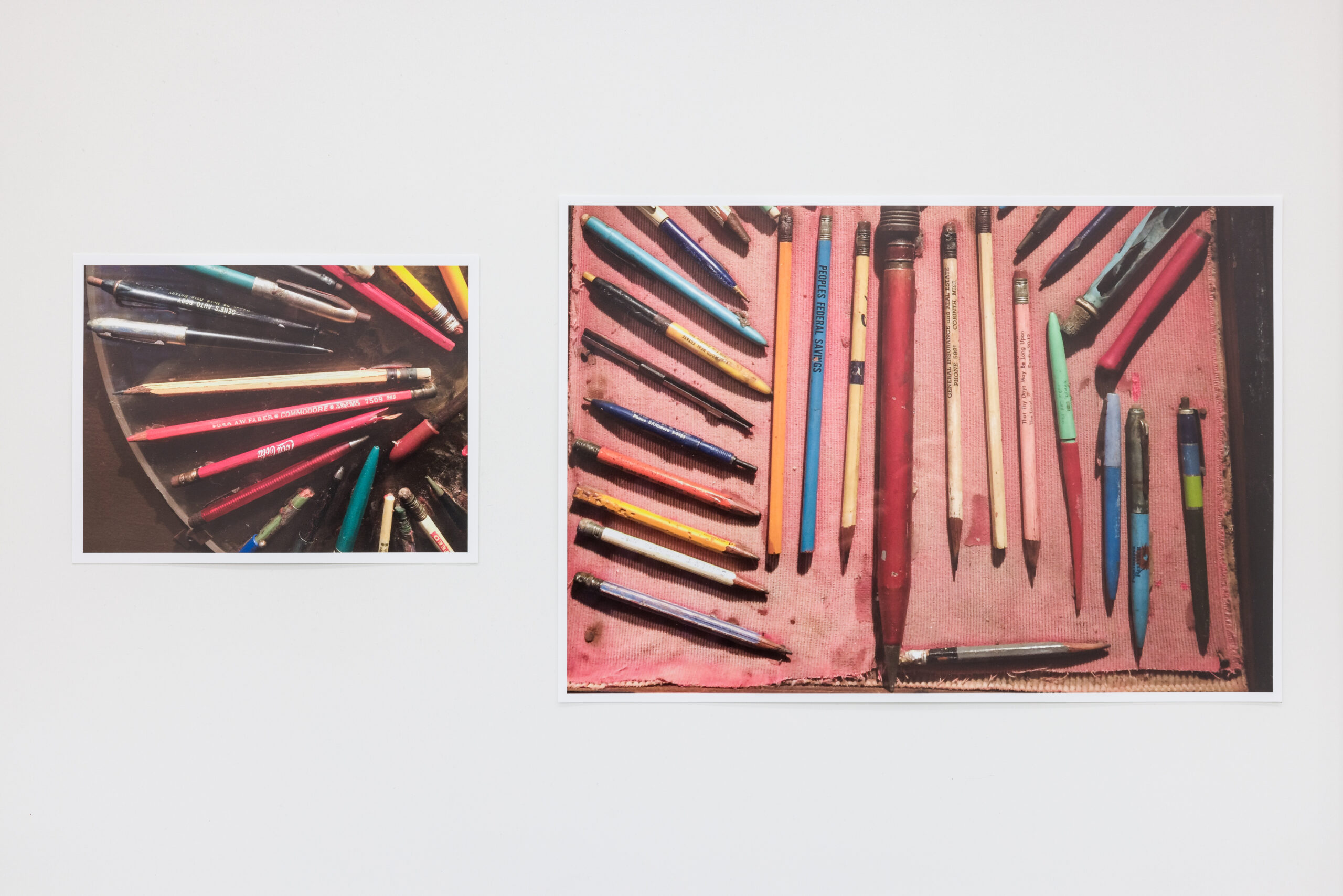
Kathi Hofer
Pencils at the Library (arrangement), 2019/22
pigment print on paper, wood frame
70 x 50 x 2,5 cm
When I published a book last year about the American artist “Grandma” Prisbrey (1896-1988), I was repeatedly asked at presentations how, as a visual artist, I had come about translating another artist’s (Tressa Prisbrey) autobiographical work into German and how I’d ended up turning it into a book. I explained that I felt that’s what I always did in my artistic work: translate. I was surprised that the book was viewed as something else: a meta-level or a completely different realm altogether. Something to be classified more in terms of cultural history than art.
The images in this exhibition were shot at two different locations, both of which are related to the book and both of which frame its genesis, so to speak. I photographed one series at the Los Angeles Public Library, where I first encountered Mrs. Prisbrey’s work. In the winter of 2019, the library had displayed an assortment of delicate pencil collages dating from between the late 1950s and the late 1970s. Some of the pencils had been used, some had names, logos or slogans printed on them, and some were adorned with beads that were attached to the end of the pencils where the eraser would have ordinarily been. I found these collages incredibly beautiful, but also quite eloquent when viewed as a form of commentary on the material culture of their time. Pencils have fascinated me for many years. They are my favourite working material and I feel they can also serve as objects onto which we project our perceptions and dreams. I took a few photos of the arrangements with my phone’s camera to serve as visual notes.
I shot the second series last autumn, a short time before my book launch, at the site of Bottle Village, Tressa Prisbrey’s monumental architectural work that forms the focal point of her story. The village is located in Simi Valley, a town about 60 km north of downtown Los Angeles. Amongst other things, Simi Valley is known for space technology, as the film location of the Poltergeist movie, Ronald Reagan’s burial place, and an area in the greater Los Angeles region where the most cops live. It was the first time I’d ever been there; and Bottle Village felt smaller and more desolate than I’d envisioned it to be, based on others’ photographs and accounts of the place. I walked through the village taking photos of details with my smartphone. A few wider-angle shots show the bad state the village is in. It was badly damaged in 1994 by the Northridge earthquake and hasn’t been rebuilt since. Nevertheless, the place has a special aura. It’s hard to describe.
Tressa Prisbrey was a grand master of appropriation, of repurposing objects, shifting contexts, of constructing and reconstructing buildings, entities and histories. I’ve thought about what she would have called what I’m doing and exhibiting here, and I think she would have said: Call it ‘pictures’.
Kathi Hofer, 2022


